List of National Natural Landmarks in Florida

The National Natural Landmarks (NNLs) in Florida include 18 of the almost 600 such landmarks in the United States. They cover areas of geological, biological and historical importance, and include springs, swamps, marshes and seashore. Several of the sites provide habitat for rare or endangered plant and animal species. The landmarks are located in 14 of the state's 67 counties. Four counties each contain all or part of two or more NNLs, while two landmarks is split between two counties. The first designation, Corkscrew Swamp Sanctuary, was made in 1964, while the most recent designation, Archbold Biological Station, was made in 1987.[1] Natural Landmarks in Florida range from 593 to 14,000 acres (240.0 to 5,665.6 ha; 0.9 to 21.9 sq mi) in size. Owners include private individuals and several state and federal agencies.[2]
The National Natural Landmarks Program is administered by the National Park Service, a branch of the Department of the Interior. The National Park Service determines which properties meet NNL criteria and, after notifying the owners, makes nomination recommendations. The Secretary of the Interior reviews nominations and, based on a set of predetermined criteria, makes a decision on NNL designation or a determination of eligibility for designation. Both public and privately owned properties can be designated as NNLs. Owners may object to the nomination of the property as a NNL.[3] This designation provides indirect, partial protection of the historic integrity of the properties via tax incentives, grants, monitoring of threats, and other means.[4]
National Natural Landmarks
| Name | Image | Date | Location | County | Ownership | Description |
|---|---|---|---|---|---|---|
| Archbold Biological Station | 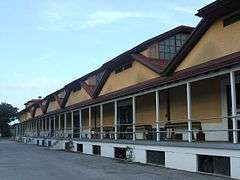 |
May 1987 | 27°10′50″N 81°21′0″W / 27.18056°N 81.35000°W | Highlands | Private | Protects the largest undisturbed tract of the Lake Wales Ridge. |
| Big Cypress Bend |  |
October 1966 | 25°51′32″N 81°2′2″W / 25.85889°N 81.03389°W | Collier | State | A part of Fakahatchee Strand Preserve State Park, it features the largest grove of royal palm trees in the country. |
| Corkscrew Swamp Sanctuary | 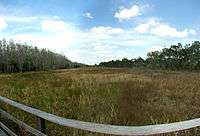 |
March 1964 | 26°25′4.41″N 81°32′18.33″W / 26.4178917°N 81.5384250°W | Collier | State, private | Contains the nation's largest remaining virgin strand of bald cypress trees. |
| Devil's Millhopper |  |
December 1974 | 29°42′25″N 82°23′42″W / 29.70694°N 82.39500°W< | Alachua | State | A karst dry sinkhole located within the eponymous state park. |
| Emeralda Marsh |  |
December 1974 | 28°58′1.46″N 81°48′13.88″W / 28.9670722°N 81.8038556°W | Lake, Marion | State, private | This inland freshwater sawgrass marsh is also a popular birding area. |
| Florida Caverns Natural Area | 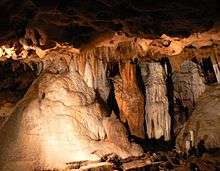 |
December 1976 | 30°48′50″N 85°13′59″W / 30.81389°N 85.23306°W | Jackson | State | Eponymous state park protects Florida's only publicly accessible cave. Winter home of the endangered Indiana bat. |
| Ichetucknee Springs |  |
October 1971 | 29°58′2.47″N 82°46′33.82″W / 29.9673528°N 82.7760611°W | Columbia, Suwannee | State | Artisan spring, the state's third largest, included in eponymous state park. |
| Lignumvitae Key |  |
October 1968 | 24°54′7.18″N 80°41′57.56″W / 24.9019944°N 80.6993222°W | Monroe | State | Located in an eponymous state park, contains the best preserved tropical hammock forest in the country. |
| Manatee Springs |  |
December 1971 | 29°29′25.49″N 82°58′37.47″W / 29.4904139°N 82.9770750°W | Levy | State | An eponymous state park surrounds the state's sixth largest artisan spring. |
| Osceola Research Natural Area |  |
December 1974 | 30°17′26″N 82°19′18″W / 30.29056°N 82.32167°W | Baker | Federal | Isolated mixed hardwood forest featuring virgin bald cypress strands. A portion of Osceola National Forest. |
| Paynes Prairie | 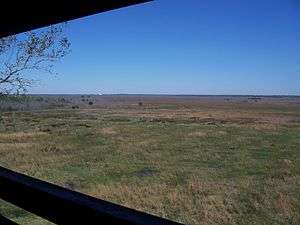 |
December 1974 | 29°34′1″N 82°22′52″W / 29.56694°N 82.38111°W | Alachua | State, private | Freshwater marsh in one of the state's largest sinks. Majority of the site included in Paynes Prairie Preserve State Park. |
| Rainbow Springs | |
October 1971 | 29°6′9.57″N 82°26′13.38″W / 29.1026583°N 82.4370500°W | Marion | State | Florida's second largest artisan spring. Part of an eponymous state park. |
| Reed Wilderness Seashore Sanctuary |  |
November 1967 | 27°2′25.64″N 80°6′49.47″W / 27.0404556°N 80.1137417°W | Martin | Federal | A part of Hobe Sound National Wildlife Refuge, protects the largest undisturbed stretch of Florida's Atlantic coast. A nesting site of the loggerhead turtle. |
| San Felasco Hammock | |
December 1974 | 29°43′44″N 82°26′31″W / 29.72889°N 82.44194°W | Alachua | State, private | Mainly located in San Felasco Hammock Preserve State Park, contains a diverse forest environment. |
| Silver Springs |  |
October 1971 | 29°12′59″N 82°3′28″W / 29.21639°N 82.05778°W | Marion | Private | Eponymous state park surrounds the state's largest artisan spring. |
| Torreya State Park | 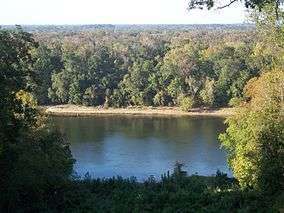 |
December 1976 | 30°34′8″N 84°56′53″W / 30.56889°N 84.94806°W | Liberty | State | Steep ravines cut through this eponymous state park. Home of endangered plants such as the Florida yew. |
| Waccasassa Bay Preserve State Park | 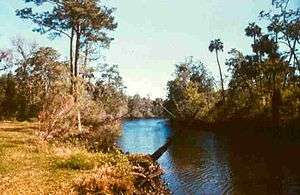 |
December 1976 | 29°10′44.37″N 82°55′50.31″W / 29.1789917°N 82.9306417°W | Levy | State | Brackish mangrove protected in an eponymous state park. |
| Wakulla Springs |  |
October 1966 | 30°13′58″N 84°17′32″W / 30.23278°N 84.29222°W | Wakulla | State | Located in Edward Ball Wakulla Springs State Park, includes the state's deepest artisan spring. |
See also
References
- General
- "National Registry of Natural Landmarks" (PDF). National Park Service. June 2009. pp. Introduction, 18–22. Retrieved 2014-05-22.
- Specific
- ↑ "National Registry of Natural Landmarks" (PDF). National Park Service. June 2009. pp. Introduction, 18–22. Retrieved 2014-05-22.
- ↑ "Florida". National Park Service. June 28, 2012. Retrieved 2014-05-22.
- ↑ "36 CFR Part 62: National Natural Landmarks Program, Final Rule" (PDF). Federal Register. May 12, 1999. Retrieved 2014-03-01.
- ↑ "Frequently Asked Questions". National Park Service. Retrieved 2014-03-01.